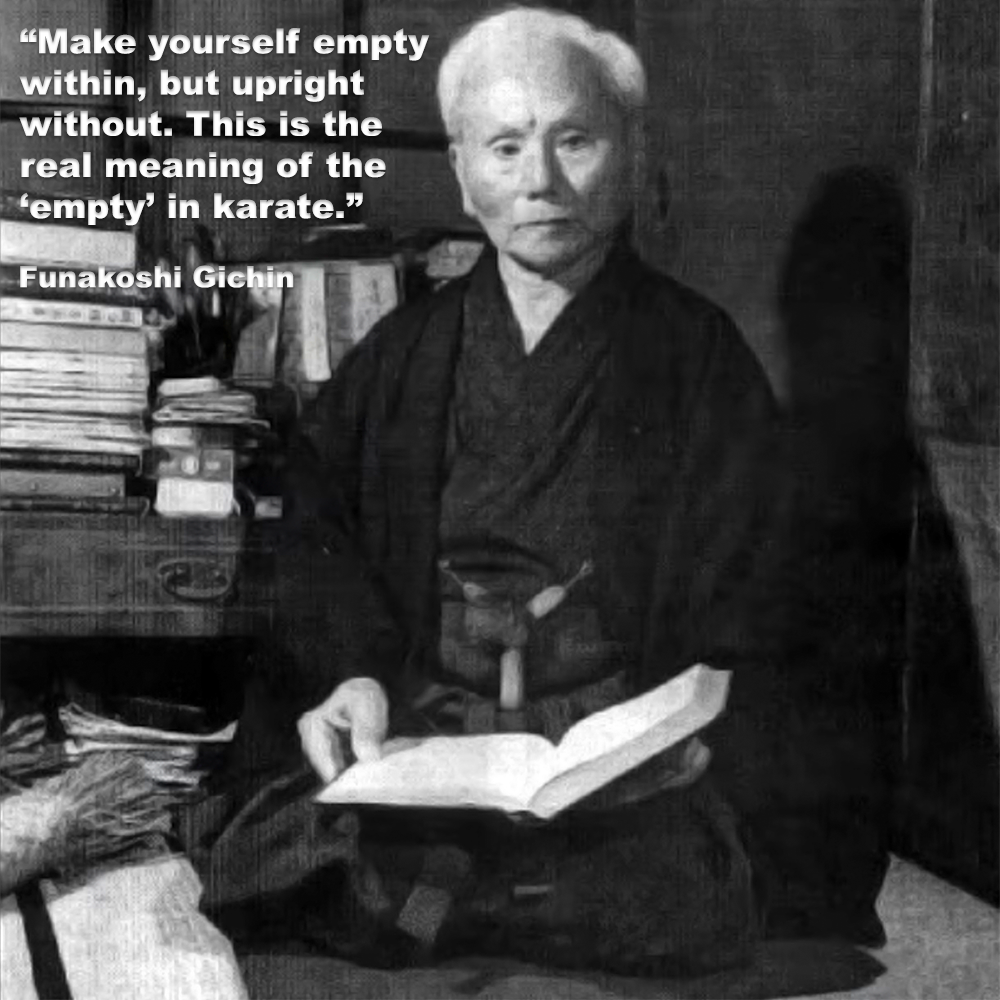
From Okinawa, karate in its original form did not have an official philosophy. Originally simply referred to as “Te”, it was simply a broad collection of principles and techniques taught and practiced by different masters. Each master likely had his own philosophies and taught his students in his own way. The only uniting characteristic of early karate was its use of certain techniques that had been adopted from Chinese martial arts.
.
Funakoshi Gichin, often labelled as the “father of modern karate”, is widely credited with introducing and making karate popular on the Japanese mainland.
.
In the early part of the 20th century, during this period Sino-Japanese relations were at an all-time low, with the rise of Japanese militarism between 1905 and 1945, and the massive increase in nationalism that came with it.
.
Funakoshi knew that this would make karate as it existed then, a hard sell in Japan. Not only did it literally have the word Chinese in its name, but its history was also closely tied to China.
.
One of the first changes made to the martial art, to be accepted on the mainland of Japan, was its name. Then, karate was translated as “China-hand” (唐手) or “Tang-hand” the masters of the time knew this would not be popular, eventually deciding on changing the name to “empty-hand” (空手).
.
To bring karate more in line with other Japanese martial arts that tend to emphasize spiritualism as well as combat, the suffix “dō” (道) was added. The new name, “karatedō” (空手道), implied that the martial art was a path to knowledge.
.
In 1935, the Dai Nippon Butoku Kai, the budo establishment that oversaw traditional Japanese martial arts in Japan, formally accepted karate.
.
But this changed karate forever. The ultranationalistic mood of the 1930s influenced all aspects of culture. To make the imported style more familiar and palatable, Funakoshi and his followers adopted the trappings of judo, including the training uniforms, colored belts and rankings.
.
Writing in Karate-Do Kyohan, Funakoshi quoted the Heart Sutra, a famous Buddhist writing. The quote was “form is emptiness, emptiness is form itself”.
.
Funakoshi believed the “kara” of karate-do meant “to purge oneself of selfish and evil thoughts … for only with a clear mind and conscience can the practitioner understand the knowledge which he receives…”. Funakoshi felt that karate practitioners should be inwardly humble and outwardly gentle.
.
Funakoshi stated that practitioners “should never be easily drawn into a fight”.
.
People often presume that karate (empty-hand) means ‘no weapons’. While it is true, by-and-large karate is indeed unarmed, it does not mean that a karate-ka should neglect using weapons.
.
To begin with, a number of the old Okinawa masters trained with weapons.
.
You need to remember that karate does not teach a set of appropriate responses to a limited number of self-defense scenarios. Rather, it teaches self-defense principles that can work in any situation. Therefore, whether you are unarmed, or have something in your hand, the principles found in karate can be used in similar ways.
.
For me, “empty hand” means “no intention”, rather than literally “nothing in my hands”. It is a reminder for us to always avoid violence, to never fight as a result of ego, or competition, and only fight to ensure your safety (or the safety of others) in the instance of unprovoked attack when no other options are available.
.
“Kara meaning ‘empty’ implies weaponless, empty-handed self-defense, and this is appropriate.” – Funakoshi Gichin – Karate-do Nyumon
.
“Just as an empty valley can carry a resounding voice, so must the person who follows the Way of Karate make himself void or empty by ridding himself of all self-centeredness and greed. Make yourself empty within, but upright without. This is the real meaning of the ‘empty’ in karate.” – Funakoshi Gichin – Karate-do Nyumon
.
Empty-hand, what does it mean to you?
